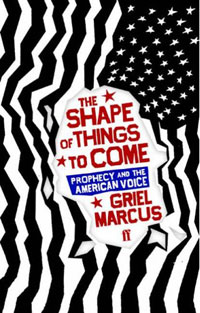Babylon’s Burning and The Shape of Things to Come

Clinton Heylin’s Babylon’s Burning (£20, Penguin Viking) is, perhaps, as definitive a history of punk and post-punk as we are going to get. At well over 600 pages it had better be! Heylin, who I’ve until now always assumed to be American, but who in fact lives in darkest Somerset, manages to balance coverage of, and explore the relationship between, both American and English strands of punk as he breathlessly flies from New York to London to Seattle to San Franciso to Manchester and Cleveland. He also brings in other scenes such as that in Australia, and somehow manages to combine this breadth and pace with insight and depth, usually supported by firsthand evidence and interviews with major players.
One good thing is that Heylin conforms to neither of the familiar versions of this story. He doesn’t presume punk somehow arose spontaneously from the working class to overthrow oppresive upper class progrockers, nor that it was all a situationist prank mastered by Malcolm Maclaren or anyone else. He intelligently contextualises the music, showing how art-rock went hand in hand with the punk end of glam in New York, and how UK punk arose out of the pub rock and back-to-basics approaches fermenting in the capital. And the two strands symbiotic influences on each other across the Atlantic.
He also acknowledges and shows that once punk had been named as a movement or genre and the word spread, there was a genuine far-flung response that thrived on secondhand news via xeroxed fanzines, old copies of NME, and sheer inspiration & response. A lot of the interesting bands and their music which Heylin describes are the ones who made the music they thought punk would sound like. Of course, that was a million miles away from the secondhand pub-rock-meets-heavy metal of the Sex Pistols: in due time the likes of Pere Ubu and The Pop Group were far more inventive and experimental, more musically aggressive and perplexing. These, plus many others heard and unheard of, all get their paragraph [or more] of fame in Babylon’s Burning. It’s one of those books that probably could have gone on forever, although perhaps the secondhand nostalgic music that was grunge is perhaps an apposite place to call a halt. Like I said, definitive.

Greil Marcus has always argued for the arty end of punk, championing the likes of The Slits, Kleenex etc, as well as proposing a situationist and occult critique of both the politics and music. I confess that The Shape of Things to Come (£16.99, Faber) has lain on my shelf, unread, for going on for a year. It’s actually been my loss, as this is a stunning reflection on fundamentalism and self-judgement of the United States of America, as evinced by David Lynch and Pere Ubu, among others. But it was when I was finally reading the index, whilst Pere Ubu was on the stereo as a result of Clinton Heylin’s book, that I realised Marcus’ book is as strange and intriguing as most of his work.
Here he considers the way that America considers itself ‘a voice of power and righteousness’ and how it struggles to convince both itself and others of this fact, therefore justifying the way it interferes in world affairs. Marcus argues that 9/11 showed an insecure, judgemental reverse to this (perhaps) honourable position – and that art such as Twin Peaks and the deconstructed rock of Pere Ubu as emblematic of this insecurity. The book is as wide-ranging as all of Marcus’ works, encompassing the likes of novelist Philip Roth and – of course – Bob Dylan, but it is with Lynch and Ubu’s David Thomas that he really finds his subject (or perhaps where he finds my subject). The book moves through various twists and turns of philosophy, sociology, musicology and lots of other –ologies towards its conclusion where Marcus finds echoes of the whole of American history in the work of Allen Ginsberg. Marcus, despite his (and our) ability to culturally time travel knows we can change nothing, only observe and immerse ourselves in what’s going on.
© 2007 Rupert Loydell